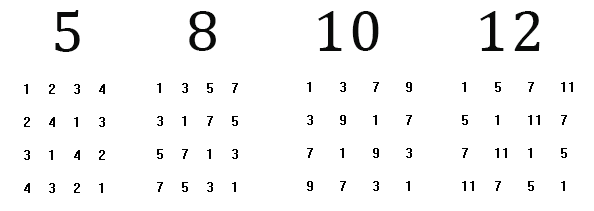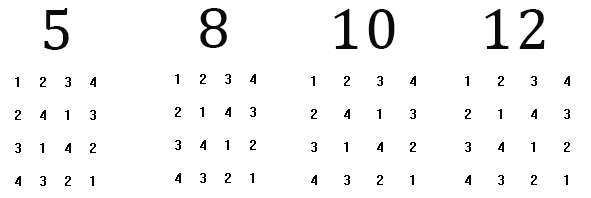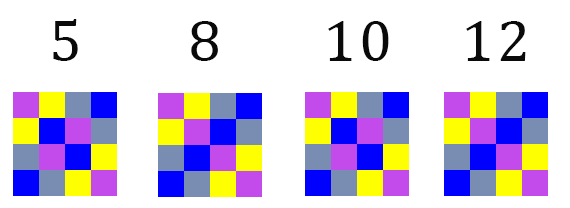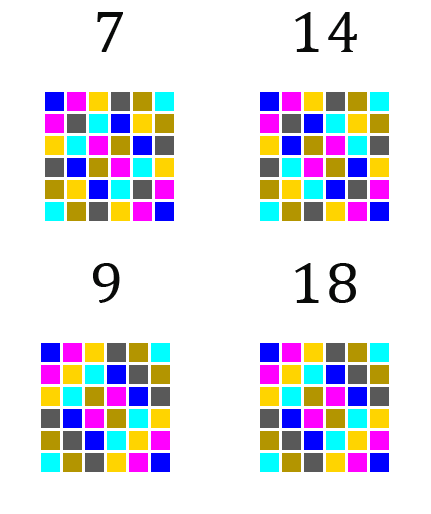In the Dune stories, mentats are trained to do complex calculations without any mechanical aids. For normal people, instantly knowing the multiplication up to 10 is a useful skill. Extending the multiplication table to twenty seems to require the skills of a mathematical savant.
However, calculating products of up to 20 actually only requires the single digit multiplication table and the ability to add small numbers mentally. My goal is to be able to do these calculations without paper. How?
If one of the numbers is single digit and the other is between 10 and 20, the calculation works like this:
A number between 10 and twenty can be written as \(10 + a\) or \(1a\). For the results you have one single digit multiplication an addition of a number times ten.
$$1a * b = (a*b) + (10 * b)$$
Since \(10 * b\) is just \(b\) shifted left by one, you can get the result by identifying \(a*b\) and then adding \(b\) to the second digit.
$$1\color{blue}{5} * \color{red}{7} = (\color{magenta}{35} + \color{red}{7}0) = 105$$
The mental steps are “calculate \(\color{blue}{5} * \color{red}{7}\)” and then “add \(\color{red}{7}\) to the second digit.”
For the product of a single digit times and a number under twenty, you always use the normal multiplication table and single digit addition.
If both numbers are between 11 and 19, the calculation works out this way.
$$a * 1b = (10 +a) * (10 + b) = a * b + 10 * (a + b) + 100$$
To start, multiply the singles place values. For example \(1\color{blue}{5} * 1\color{red}{7}\) starts as \(\color{magenta}{35}\).
Then add \(\color{blue}{5} +\color{red}{7}\), giving \(\color{orange}{12}\).
Add that in the 10s place \(\color{magenta}{35} + 10 * \color{orange}{12}\) giving \(\color{brown}{155}\) and finally, increment the hundreds digit, giving \(\color{green}{255}\)
This involves multiplying single digit numbers, adding a pair of single digits, adding a digit and a number less than twenty and incrementing a digit. It works out to needing having six or so digits in mind at once which can be less than one’s estimated working memory of 7 digits.
If one of the numbers is 10, add a zero to the right of the other value. For twenty, double the other number and add a zero. Now there’s a simple way to multiply two numbers where both are 20 or less.
With a little practice, I can do this in my head. More importantly, I’m confident of my result so that I’m getting so that I don’t need to double check on a calculator.




